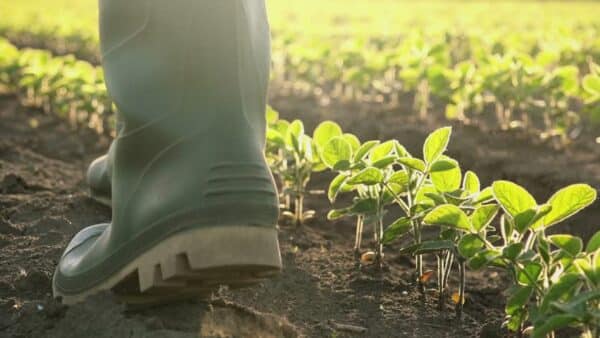
Early season planting of soybeans has become more popular as the spring weather becomes more welcoming. When evaluating whether or not early planting will pay off, there are a few things that should be considered.
Early planting has been shown to improve soybean yields and increase photosynthesis, but risk of disease and pest pressure may eat away at the overall yield also increases. The benefit of planting soybeans early, ensures the plant’s ability to capture more solar radiation, which in turn, will drive plant growth and yield. Early emerged soybeans will be able to canopy earlier in the growing season, maximizing the photosynthesis and solar radiation uptake. This early canopy closure will improve light interception, help control weed pressures, retain soil moisture, and allow the plant to flower earlier, increasing the amount of time spent in the reproductive stage.
Soybean flowering is triggered by the plant reaching ideal size and the nights getting longer. By planting early, there is a better chance the plant will become large enough that after the solstice, flowering will be triggered. This early onset of flowers will allow the plant to spend more time in the reproductive stage, promoting more pod set and higher yields as well as the nutrient availability and environment allow for such.
Although planting early has some yield benefits, as previously mentioned there are also negative impacts that may need to be managed in order to optimize success. Planting conditions early in the spring may mean cool, wet soils which can promote seedling diseases and pest pressures.
Depending on the field preparation and management, the soils may remain cool and below optimal temperature (50° F), which can cause injury to the soybean seed. Cool soil can potentially cause chill injury and cold stress, which will have an impact on overall stand and plant health. Several diseases can also manifest in the cool, wet soils and infect a young soybean seedling. Diseases such as Pythium and Sudden Death Syndrome are favored by these conditions, whereas Phytophthora and Rhizoctonia are favored in warm, wet conditions. These diseases can infect the plant and eat away at yield, especially if the plant is already weakened from unfavorable planting conditions, or stress. It is important to manage for these diseases, as fungicides and seed treatments can help decrease the susceptibility of the seed. In order to optimize yield, the disease pressure early on needs to be minimized.
Aside from the early season diseases, early pest pressures can impact young soybean plants and impact soybean stands. Wireworms, white grubs, and seed corn maggot can feed on both the seed and the plant below ground. In turn impeding growth and health of the plant. Depending on the impact of damage, the plant may outgrow the damage but yield will most likely be impacted. These pest pressures can be managed by seed treatments and proper planting conditions.
Overall, environmental and soil conditions play a large role in the soybean health and yield potential. If the conditions slow the emergence or growth rates of the soybean, there is a possibility of disease or pest pressuring coming in secondary and minimizing the yield potential. The best way to ensure proper growth and have the best chance of increasing yield potential is to plant when the conditions are conducive and favorable for the soybean seed to prosper.
Cassidy Fletcher, SEEDWAY Northeast Sales Agronomist and Technical Lead